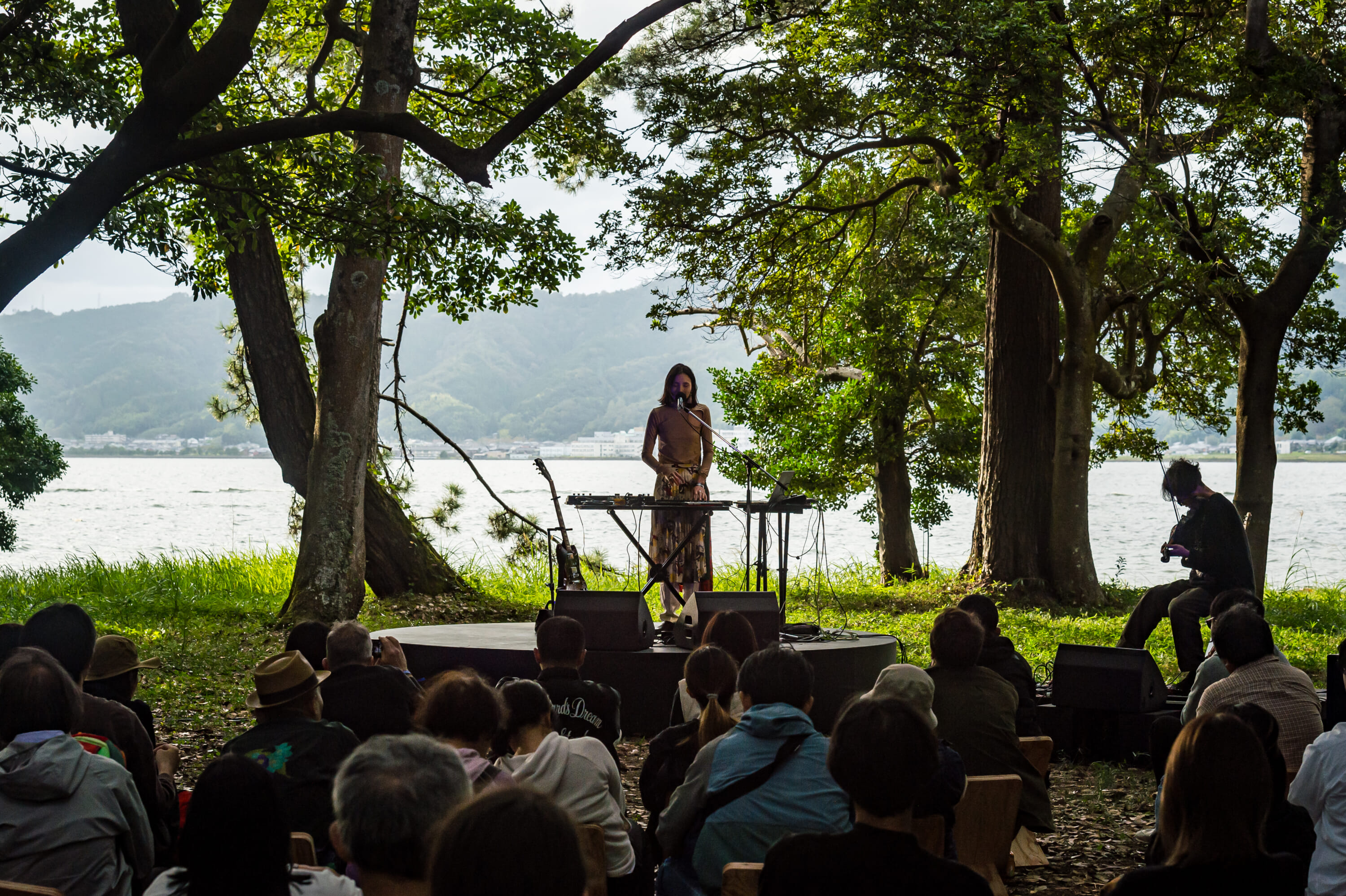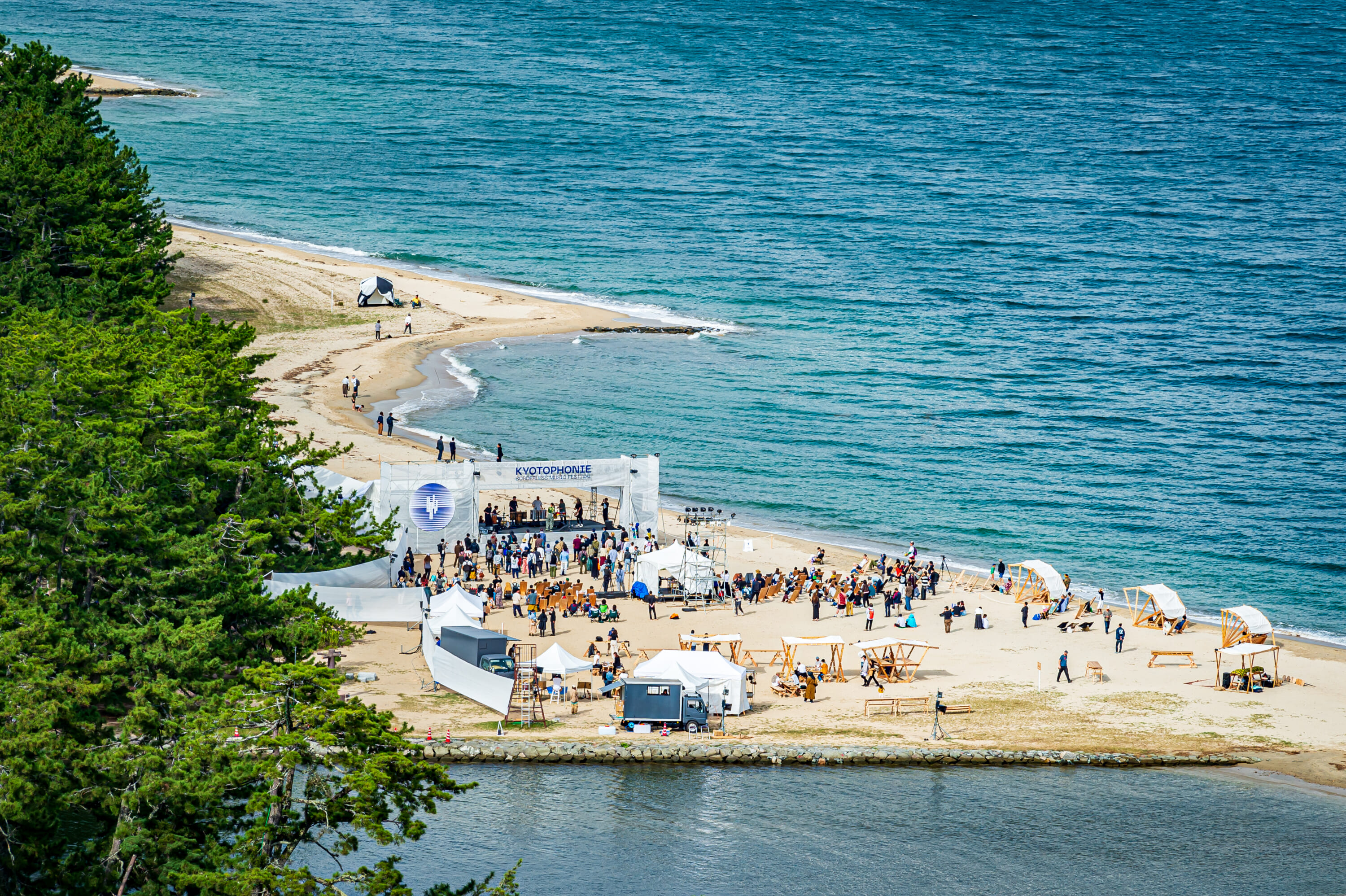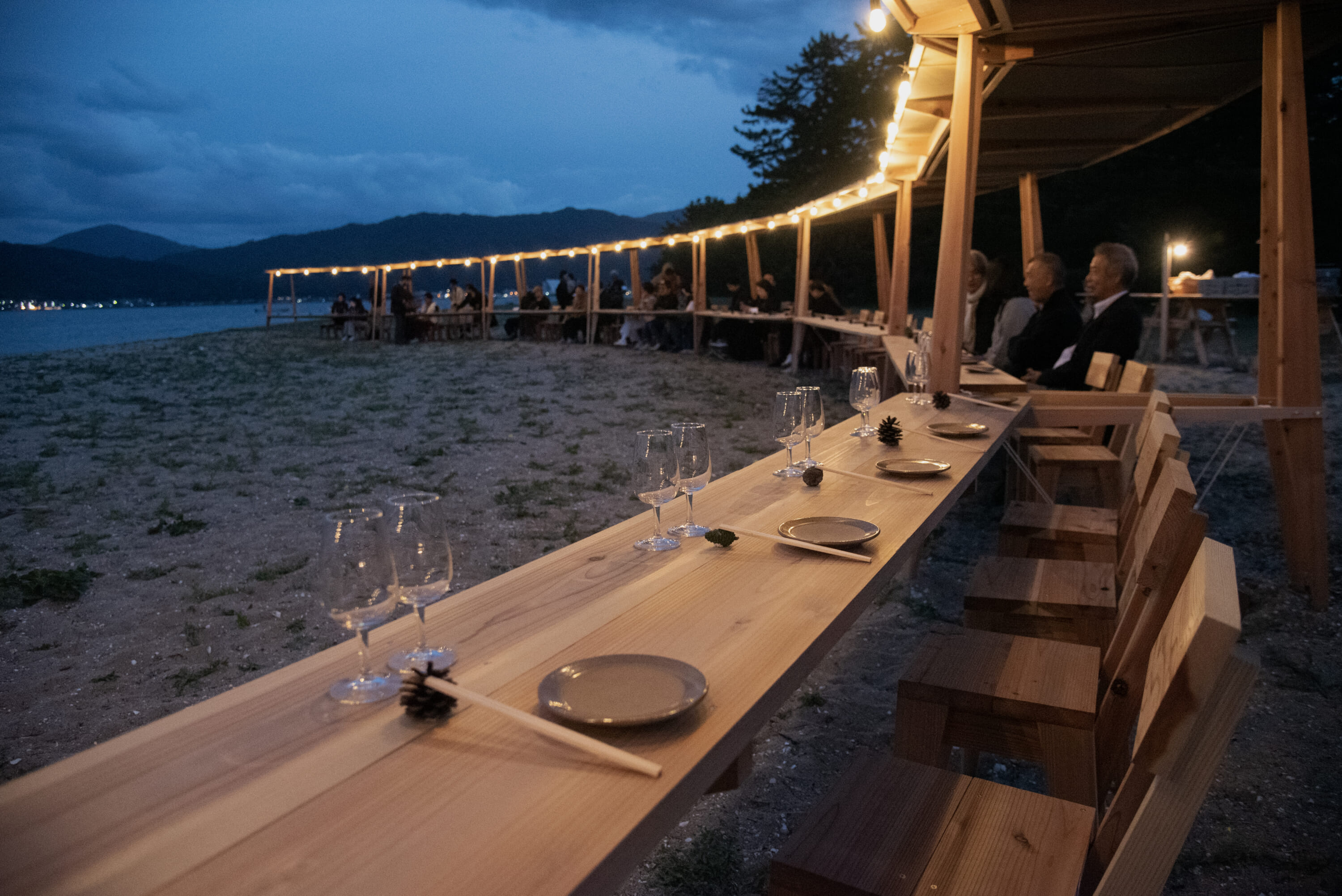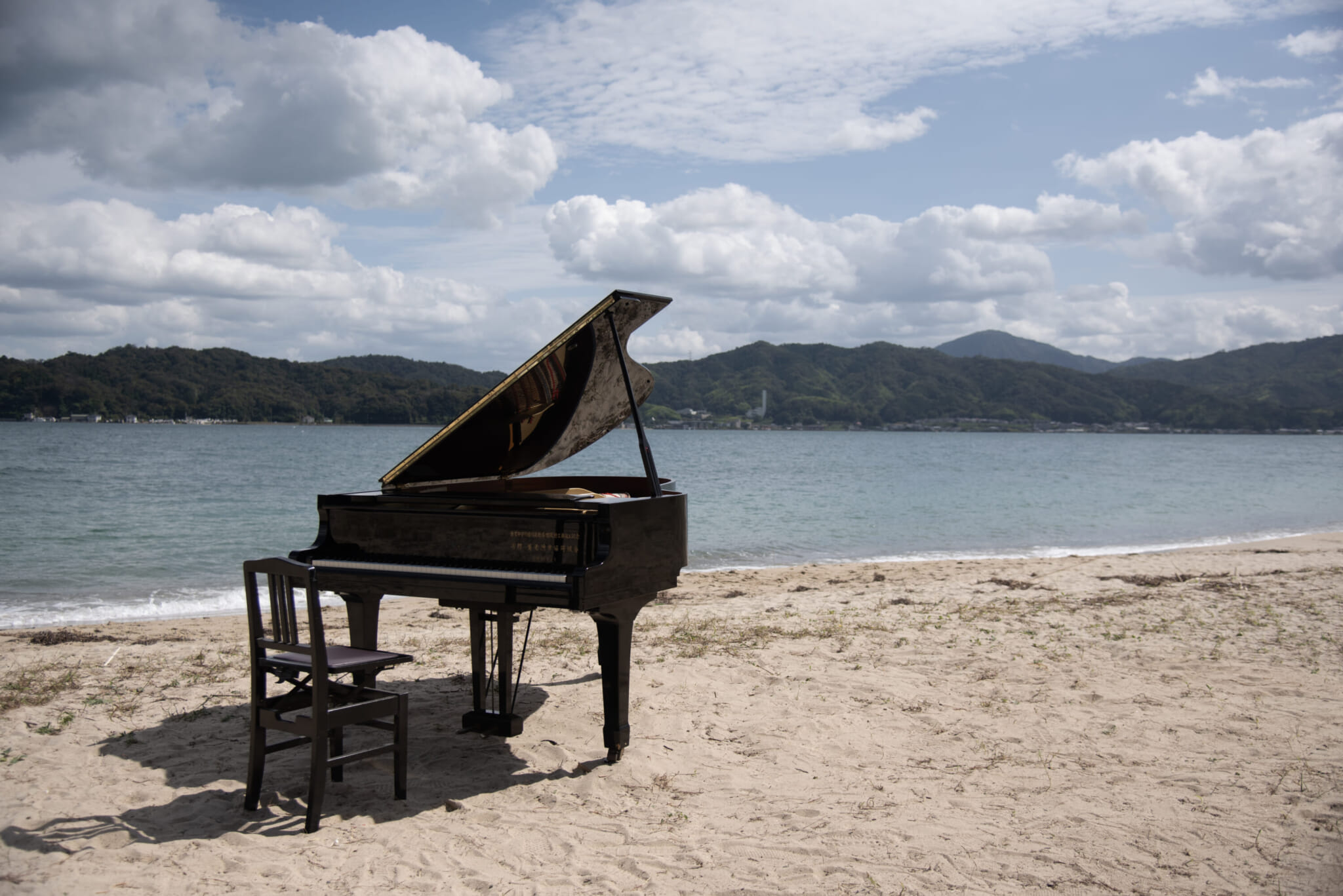The photography festival Kyotographie has, over the last decade, become one of the most anticipated events of the year in Kyoto. It launched its biannual sibling event, Kyotophonie, in spring of this year. The second edition took place this fall and we were there to enjoy it. Combining music and gastronomy, Kyotophonie took place in the stunning location of Amanohashidate in northern Kyoto Prefecture at the mouth of Miyazu Bay.
Ranked as one of Japan’s three most scenic views, Amanohashidate hosted a wonderful gathering for music and food lovers with an eclectic setup of Japanese and international creatives, from singer-songwriters, jazz and folk musicians to Latin-afro, hip-hop and reggae artists.

Photo by Kohei Take
Rhythm and Beats
The festival was spread throughout the narrow Amanohashidate strip. At the entrance, there was a gathering of local food trucks and shops, while the Beach and Forest stages were set up further along the park.
Guests were welcomed into the scenic location with an ukidaiko drumming performance, an intangible folk cultural property of Miyazu, a city in Kyoto Prefecture. The Beach Stage opened with the radiant Kavka Shishido directing Japan’s leading drummers and percussionists into an improvised frolic of rhythm. The audience radiated joy and energy listening and reacting with their whole bodies. It was hard to resist the draw of the dynamic beats.
Rhythms were also guaranteed thanks to the Brazilian singer-songwriter Chico César. As he performed, the afternoon was filled with smiling faces and bare toes dancing in the sand. The distinctive set of U-zhaan, Tamaki Roy and Chinza Dopeness — a combination of hip hop, rap and the Indian tabla drum — brought another type of rhythm to the day. It was the perfect manifestation of Kyotophonie’s borderless concept.
The Bridge to Heaven
Moving from one stage to another, festival goers could stroll through the beautiful pine tree-lined trails with the glimmering sea on both sides. In the evening, the trail was guided by dimly lit lanterns.
Along the way, guests came across “Piano by the beach,” the open-to-all grand piano which lay right at the water’s edge. There was also an opportunity to step into the intriguing Camera Obscura by Ryosuke Toyama.
On top of all that, visitors could reserve a tea ceremony at the Kian Teahouse — a world-traveling bamboo structure without walls or ceilings – celebrating the beauty of imperfection and inviting an experience with nature.

Photo by Kohei Take
From the Beach to the Forest
The musical program alternated between the stages. The artists’ styles fitted the moods of the locations — the sunny, open beach with salt in the air and the moodier, dusky pine-scented forest.
On the Forest stage, the Japanese-Canadian singer-songwriter Julia Shortreed gave an ethereal and ambient performance, intertwined with the backdrop of the Asoumi Sea as the afternoon light shifted through the forest leaves. Another highlight was the curious art and music show by Circo de Sastre, in collaboration with filmmaker Mitsusai Sekine. The black and white reel created an otherworldly and immersive setup in the dark, wet forest.
The Beach stage, right next to the water, offered an additional dimension to the performances. Ichiko Aoba’s fantastical, crystal-clear singing, piano and guitar tunes mixed beautifully with the sound of the crashing waves, as if it had always been part of her music. Luedji Luna served up perfect Sunday vibes with her smooth, sensual Afro-Brazilian set. It kept moods high even when the rain started.
The perfect ending came with the soulful sounds of Inna de Yard, the Jamaican Buena Vista Social Club. These musical legends threw an epic reggae party to send everyone off into the night.
Bistro by the Beach
Kyotophonie claimed to be a festival of music and gastronomy. It was a promise that was ultimately realized. The Beach Bistro presented by Rimpei Yoshikawa from Shibuya’s Pignon and Fumihiko Oumi from Delta Kyoto was staged with long queues on both days. And for good reason. The charcoal grill was used to prepare dishes using seasonal ingredients, which were exemplary. Feel-good food accompanied by some lovely, natural wine.
The Beach Bistro area was airy and light yet also featured beautifully designed wooden structures and furniture. It was the loveliest setting to enjoy the food while listening to the DJ — with real, proper tableware and cutlery — a rarity for a festival setting.

Photo by Ida Tuononen
Dinner by the Sea
A special gastronomic highlight of the event was to be found at the Beach restaurant run by Masayo Funakoshi of Kyoto’s Farmoon and visiting Michelin-starred French chef Armand Arnal. Their second collaboration, the pair created a dream dining scenario by the beach.
A covered half-moon counter table overlooking the sea with unparalleled views of Amanohashidate set the perfect stage for a feast of ingredients sourced from the waters of Miyazu Bay and the farms and forests nearby. Romantic and with a backdrop of a darkening night and dim lights, plus the sound of crickets and waves, it was the ideal locale for the multi-course banquet of brilliant, delicious dishes which highlighted the taste of the surrounding landscape.
Bridging Art and People
Young and old, families, groups of friends and individuals, the festival was a lovely mix of people. Filled with beautiful encounters, the event managed to bridge not only different forms of art, but also people. The atmosphere culminated in the last gig on Sunday night, with festival goers, artists and chefs all dancing together.
Kyotophonie sought to connect nature, music, art and culinary experiences in a distinctive setting. It was accomplished beautifully. Impressive cuisine, inspiring performances with joyful, fresh music and intimate, cool vibes throughout the weekend.
The Kyotophonie Spring edition will be held alongside the annual Kyotographie festival in Kyoto from April 13 to May 12, 2024.
Updated On October 31, 2023









